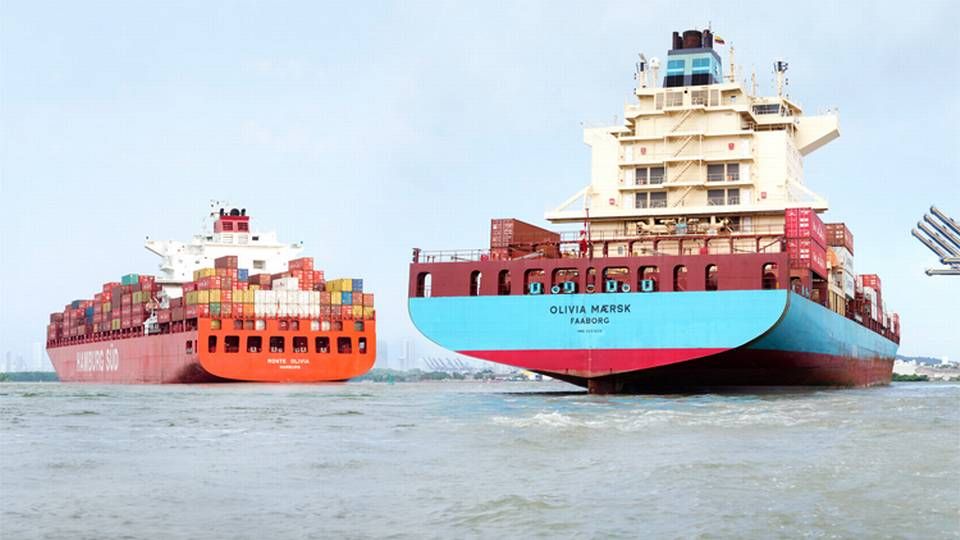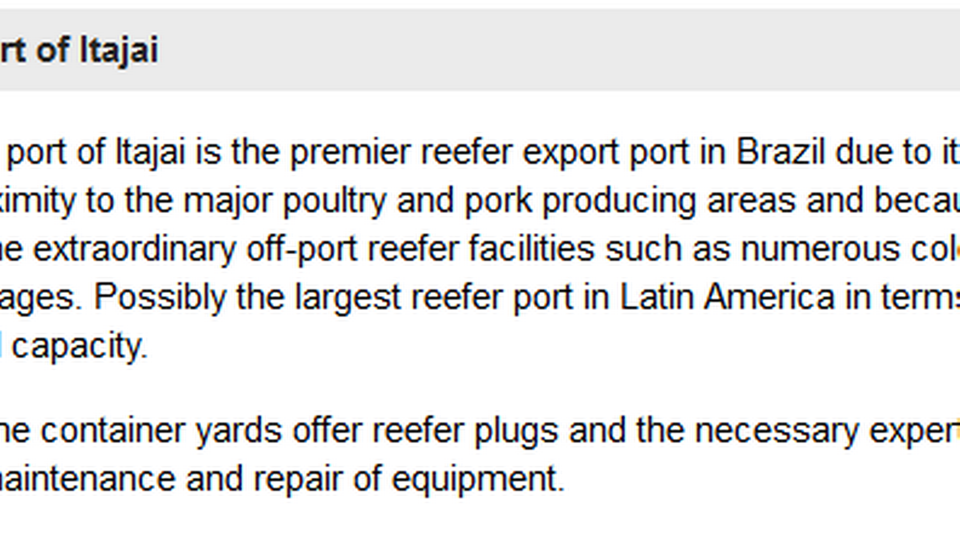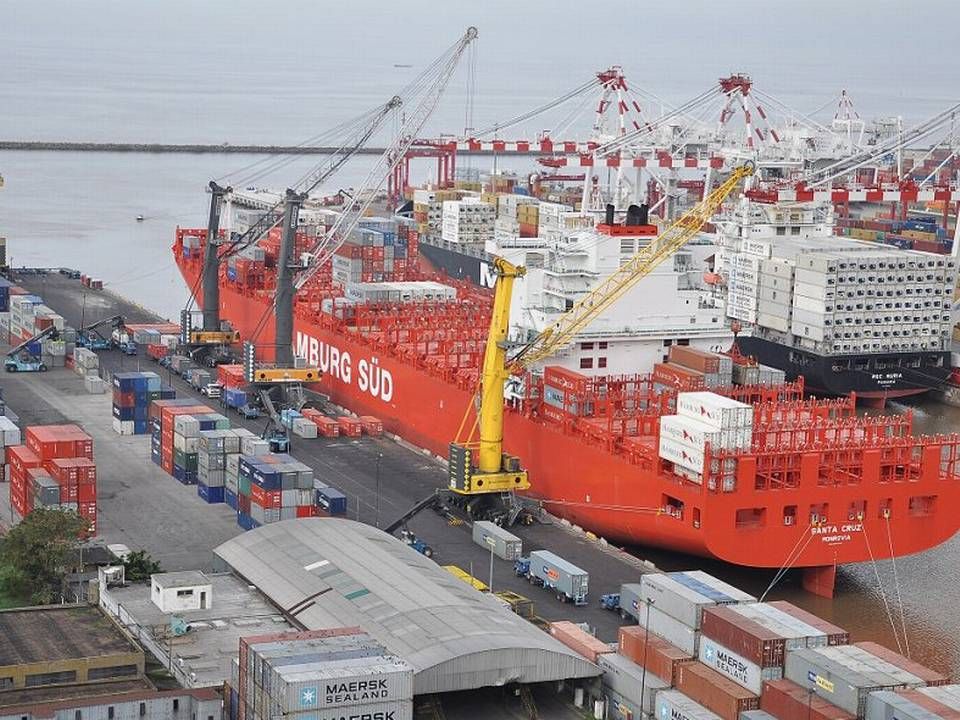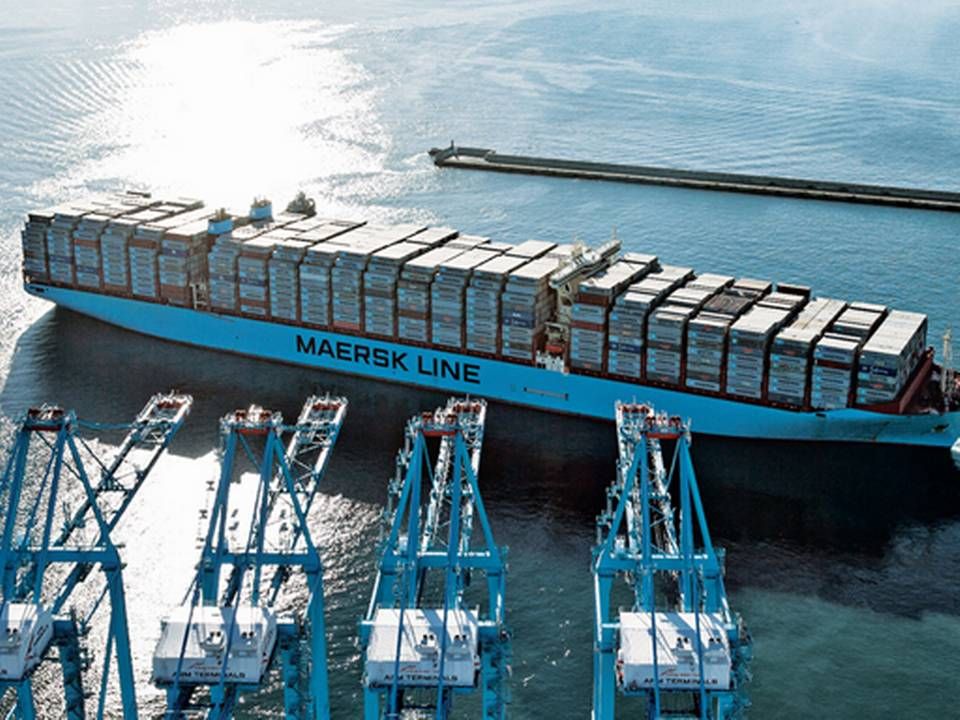Analyst: Maersk Line loses key route after Hamburg Süd purchase

While analysts and industry stakeholders agree that Maersk Line's expected financial gains from the acquisition of Hamburg Süd could be hit by requirements from regulators, especially in the EU and China, the merger looks to be especially challenged on the perhaps most important and direct route from the South American east cost to North Europe.
The transport of food products in reefer containers out of Brazil, in particular, one of the world's top exporters of agricultural goods such as chicken, beef, pork and fruits, represents a key element in Maersk's acquisition of Hamburg Süd for USD 4.4 billion, a carrier whose core business is Brazil and Latin America in general.
Maersk Line and Hamburg Süd together will control a significant part of the reefer market and container shipments in and out of Latin America, a business that will be key to Maersk's future container business, with the Latin American trades becoming the carrier's single biggest business measured in overall capacity.
However, Maersk Line will lose ground compared to the other major carriers in Brazil in the very spots where concentration and the port facilities are biggest, shipping analyst Leandro Carelli Barreto of Solve Shipping in Sao Paolo tells ShippingWatch.
"Despite being a reefer specialist, Maersk Line no longer has a direct service between Itajai and Navegantes on Brazil's east coast to North Europe. Itajai, where Maersk owns terminal APMT Itajai, and Navegantes are the second-largest container market in Brazil and the by-far most important reefer port," Barreto tells ShippingWatch.
Before the acquisition of Hamburg Süd, Maersk Line shared three weekly services from Brazil to North Europe with either MSC or Hamburg Süd, of which two of them called in Itajai and Navegantes, in Brazilian state Santa Catarina.
Maersk facing challenges
Maersk and MSC also shared two weekly services to the Mediterranean to and from the two Brazilian ports.
"The adjustment recently made in the VSAs between Brazil and Europe is a good example of the extent of the challenges experienced by Maersk following the acquisition of Hamburg Süd in order to fulfill all the joint services terminations required by several authorities around the world while maintaining a competitive market coverage and still reaching the anticipated so-called synergies and savings," says Barreto.
Maersk Line denies that the route adjustments can be attributed to the conditions required by the EU Commission for its approval of the Hamburg Süd acqusition.
He notes that the combined price Maersk has paid for Hamburg Süd has become higher than expected because of the requirements from the authorities:
The EU Commission's conditions for approving Maersk Line's acquisition of Hamburg Süd have been described as perhaps the toughest ever set out by the EU competition commission to a merger between two container carriers – conditions that have meant that Hamburg Süd has had to withdraw from four VSAs in four consortia to and from Latin America.
China has also, for its approval of the merger, demanded certain concessions for VSAs on routes on the west as well as east coast of South America.
Hamburg Süd and Maersk Line will, as a starting point, have an aggregate market share of 33 percent in Latin America.
Maersk Line: A competitive product
Maersk Line writes in an email to ShippingWatch that the Santa Caterina region can be serviced from three ports Itajai, Navegantes and the port in Itapoa:
"On the North Europe loop Maersk Line offers a competitive product via Itapoa in both directions," says Maersk Line, stressing that Itapoa meets the carrier's requirements in terms of its container volumes, and that Itapoa is located less than 100 kilometers from Itajai/Navegantes.
Maersk Line also notes that the carrier in its previous set-up, and prior to the acquisition of Hamburg Süd, only collaborated with MSC on southbound services, and thus not out of Brazil.
"Previously Maersk Line only called Itajai in the southbound direction. We previously covered Itapoa through the slot purchase agreement from Hamburg Süd, however with a relatively small allocation."

Maersk Line adds that the carrier in earlier October this year signed a VSA with container carrier CMA CGM on routes from the South American east coast to the Mediterranean as well as an agreement in September to purchase slots on Hamburg Süd's ships from the east coast to North Europe.
"These decisions were independent of the acquisition of Hamburg Süd. Through this Maersk Line improved its coverage of the Mediterranean by getting direct coverage of Italy, including Itajai directly to Italy, which was previously served via transshipment from Algeciras," writes Maersk Line.
The ports reefer off-port area in Itapoa, according to Barreto, has far from the same scope of reefer capacity than Itajai and Navegantes. Furthermore, Italy is a much smaller market than North Europe.
According to Barreto, Maersk also needs to complete a large-scale overhaul of its feeder activities along the coast of Brazil, a business that was previously handled by Maersk's subsidiary carrier Mercosul Line – a carrier Maersk had to sell to rival CMA CGM, allegedly in order to have the Hamburg Süd purchase cleared by Brazilian regulators:
"It's crystal clear that shippers, recipients and terminals must be ready to quickly adapt their logistics and strategies in step with the development toward fewer but bigger vessels."
Maersk Line's acquisition of Hamburg Süd weakened by authorities
Maersk's acquisition of Hamburg Süd intensifies battle for market shares
Maersk Line gets Latin America as single biggest tradelane
Maersk Line and Hamburg Süd in new collaboration with CMA CGM
Maersk Line and Hamburg Süd will dominate Brazilian reefer market


















